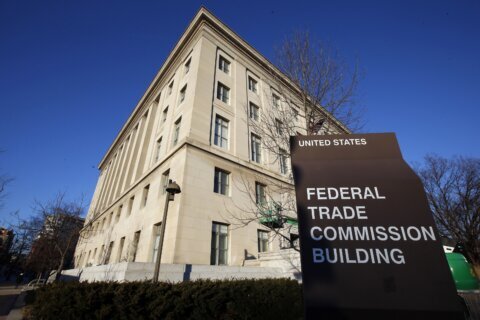The average 401(k) plan account balance is down 2 percent through the first two quarters of 2016, on a year-to-year basis, according to a recent report from Fidelity Investments.
That’s not a number that will have retirement savers reaching for the Pepto-Bismol, but the average 401(k) plan balance, at just $88,900 according to Fidelity, may yet prompt a midnight visit to 7-Eleven for some stomach relief after all.
On the surface, $88,900 doesn’t seem like a bad number. After all, it’s $88,900 better than nothing at all in a retirement account.
But if you’re past 50 and feel retirement looking ever closer, a 401(k) account with less than $100,000 won’t get the retirement savings job done at all — not when financial experts estimate you’ll need at least 4 percent of your total retirement savings each year to get by in your golden years.
You don’t even need to pull your socks off to do the math — 4 percent of $100,000 is $4,000 annually in retirement — barely enough to just buy the groceries or keep the lights on.
[See: 13 Ways to Take the Emotions Out of Investing.]
To get back on the fast path to a decent retirement, 401(k) plan savers with a low balance number need to take some solid, aggressive steps to turbocharge their retirement plan savings.
Never cash out of a 401k plan — not until retirement. According to the latest data from the Bureau of Labor Statistics, the average time a person spends at each of his or her jobs is 4.6 years. “That means by the time that person reaches retirement age, he or she could have been employed by 10 different companies,” says Penny White Gordon, a financial advisor with Gibraltar Private Bank & Trust in Coral Gables, Florida. “Leaving 401(k) plans at each of those companies over the course of a career is not only difficult to manage, but it could be a costly mistake.”
Play catch-up. An easy way to maximize your 401(k) portfolio if you’re 50 or older is to take advantage of the catch-up provision. “This provision was created by the Economic Growth and Tax Relief Reconciliation Act of 2001 in order to help older individuals catch-up and save more for retirement,” Gordon says. “It allows you to defer an extra amount beyond the usual IRS-mandated maximum each year.” In 2016, Gordon said this is an extra $6,000 you can elect to save by year-end. Assuming the average person will retire at age 65, this is at least an extra $90,000 you can defer over 15 years without taking into account the tax-deferred growth you might enjoy on the money. “Sadly, studies indicate that only a small percentage of eligible employees take advantage of this powerful provision,” Gordon says.
Get more aggressive with stocks. Ed Snyder, a certified financial planner with Oaktree Financial Advisors in Carmel, Indiana, strongly advises 401(k) plans falling behind on assets to make up ground through an aggressive stance on stocks. “Over the long term, history shows that the best returns are to be gained investing in stocks,” Snyder says. “Over the short term the ride may be bumpier but the long-term returns have been higher.” The key, he says, is to remain patient and disciplined over the short term and invest more when the market is declining. “It seems counterintuitive but when the market slips, prices are lower,” he says. “That means you’re buying stocks on sale.”
[See: 12 Tips for Investors in Their 50s and 60s.]
Upgrade your contribution rates. There’s no federal law that says you have to spend a workplace bonus or raise, or even a family inheritance. “Set your deferral contribution amounts to increase automatically every time you get a raise,” says Robert Massa, director of retirements at Atlanta-based EPIC. “This way you’ll increase how much you contribute and it won’t adversely affect your take-home pay.”
And, if your plan has the feature, take advantage of workplace auto-escalation programs. “Plans are becoming more and more automated these days,” says Jeanne Fisher, retirement plan specialist at ARGI Investment Services, in Bowling Green, Kentucky. “That’s where the participant can elect to automatically increase their contribution every year. You can elect the increase and cap it. So for example, enroll at 6 percent, then choose to automatically increase your deferral by 1 percent every year until it caps out at 10 percent. Most participants intend to increase the amount of their deferral over time, but actually forget to do so.”
Max out — and match at the right time — Massa advised contributing up to, or beyond the company match. “If your company offers a match to your 401k plan, always contribute to an amount that at least earns the maximum match,” he says. “Otherwise, you’re giving up a tax-deferred raise from your company, and everybody wants a raise.” Massa also wars not to max out too fast. “If you’re among those who contribute the maximum each year ($18,000 in 2016, or $24,000 if you’re 50 or older), you want to make sure that you don’t reach your annual contribution limit too quickly, or it could negatively affect your match,” he said. For example, Massa says, if you’re company matches up to six percent of your pay each pay period, but you hit the $18,000 limit in July, your company match may stop, even though you may be entitled to more match. “Instead, calculate your deferrals so that you contribute an amount each pay period so that you hit your $18,000 or $24,000 maximum on the last pay period of the year,” he notes.
[See: 20 Questions to Ask Before Hiring a Financial Advisor.]
Nobody is saying these are the only ways to turbocharge a struggling 401(k) plan, but they’re at the top of the list, if you ask a financial expert or two. See if they don’t make a difference in boosting your 401(k) plan assets.
More from U.S. News
7 Dividend Stocks to Buy That Pay More Each Year
6 Famous Flameouts of Famed Investors
7 Pharma Stocks and the Prognosis for Profits
5 Ways to Turbocharge Your 401(k) originally appeared on usnews.com







